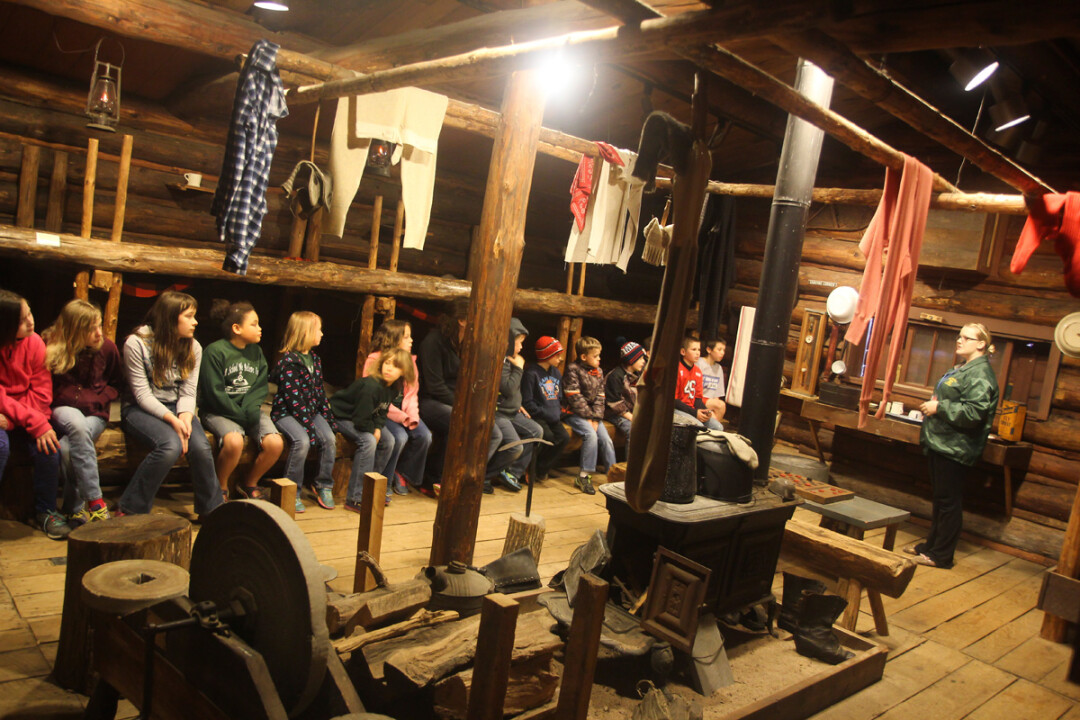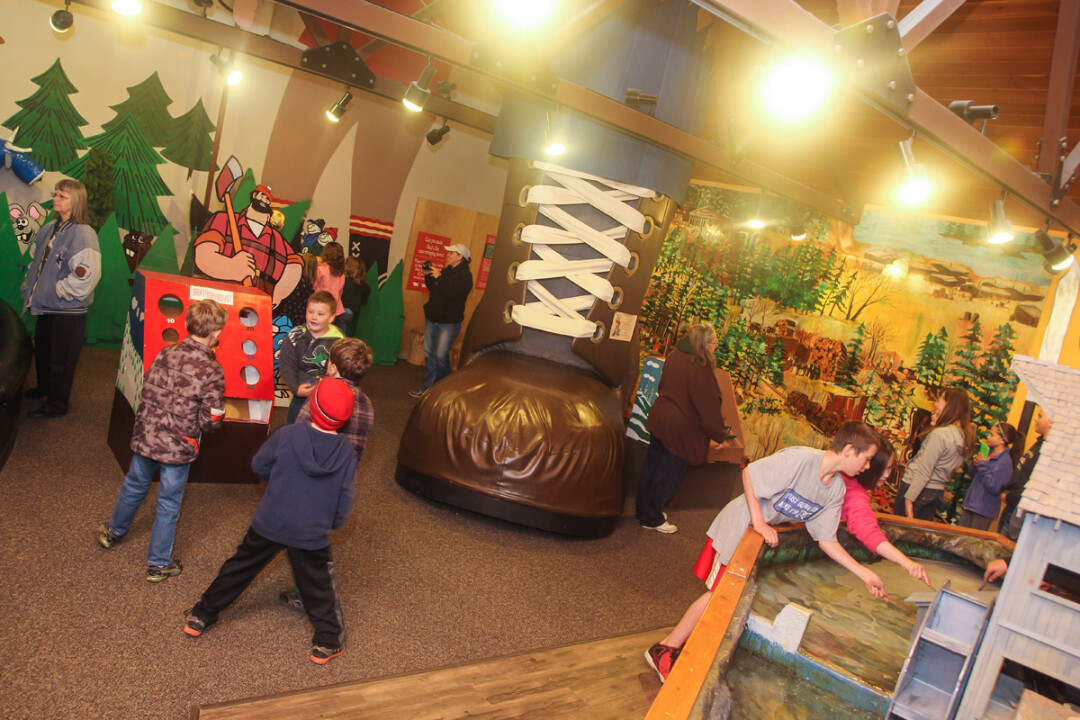Living Large at the Paul Bunyan Logging Camp

Maybe it’s because he’s so big that he’s interesting to people who are so little. Maybe it’s because he got to live in the woods and chop down trees all day. Or maybe it’s because his pancake griddle was greased by lumberjacks wearing bacon slabs on their feet like ice skates. Whatever the case, the legendary Paul Bunyan fascinates children, and the mythic lumberman’s looming presence is part of the appeal of the Paul Bunyan Logging Camp Museum in Eau Claire.
And while Paul himself is fictional, the men whose northwoods exploits inspired his tall tales were very real. Each year thousands of kids tour the museum, which is nestled in Carson Park, to learn about northern Wisconsin’s 1890s logging era through stories, exhibits, artifacts, and period-style camp buildings, including a combination bunkhouse and cook shanty.
“It really helps the logging history come alive,” museum executive director Diana Peterson says of the bunkhouse-cook shanty building, which was built in the 1930s to resemble the real thing. “You feel like the lumberjacks are going to walk back in at any time.” The same could be said for the rest of the camp, which includes a barn, a blacksmith’s shop, and a heavy equipment shed, which is filled with century-old machines with names like “rutter” and “go-devil.”
Then again, visitors should consider themselves lucky they aren’t living in a real 19th-century logging camp. Because such camps operated in the winter, real-life bunkhouses were uncomfortably hot in the center and frigid near the ceiling and walls. They were filled with smoke, riddled with lice, and scented with the odor of men who bathed only once a month. And, despite the romantic appeal of swinging an ax for a living, lumberjacks were paid only $1 a day. (Even your kids will know that isn’t much money.)

HANDS-ON EXHIBITS AND GAMES.
Because the museum – which features interactive exhibits, vintage photos, and tools – is a frequent school field-trip destination, museum staff members are accustomed to dealing with kids and some exhibits are designed especially for them. In particular, the Paul’s Tall Tales Room gives younger children a chance to step into the Bunyan stories – quite literally: They can skate on “bacon slabs” or clamber on one of Paul’s gargantuan boots. With the help of knowledgeable guides, kids will also learn that despite Paul Bunyan’s legendary size, most 19th-century lumberjacks were quite small, at least by 21st-century standards. Peterson says the average lumberjack stood about 5’4” and weighted 140 lbs. In other words, these real-life Paul Bunyans weren’t much bigger than today’s tweens.
The mark lumbermen and logging left on the region was huge, however: “It’s what made Eau Claire into Eau Claire,” Petereson explains. From banks to breweries to businesses – not to mention the lack of endless acres of 200-foot-tall white pines – today’s kids can still see the shadows of the logging industry in the community around them. At the Paul Bunyan Logging Camp Museum, they can see the things that cast these shadows up close.
Paul Bunyan Logging Camp Museum • 10am-4:30pm daily, May 1-Sept. 30 • 1110 Half Moon Drive (inside Carson Park), Eau Claire • $7 adults, $4 children • (715) 835-6200 • www.paulbunyancamp.org






















